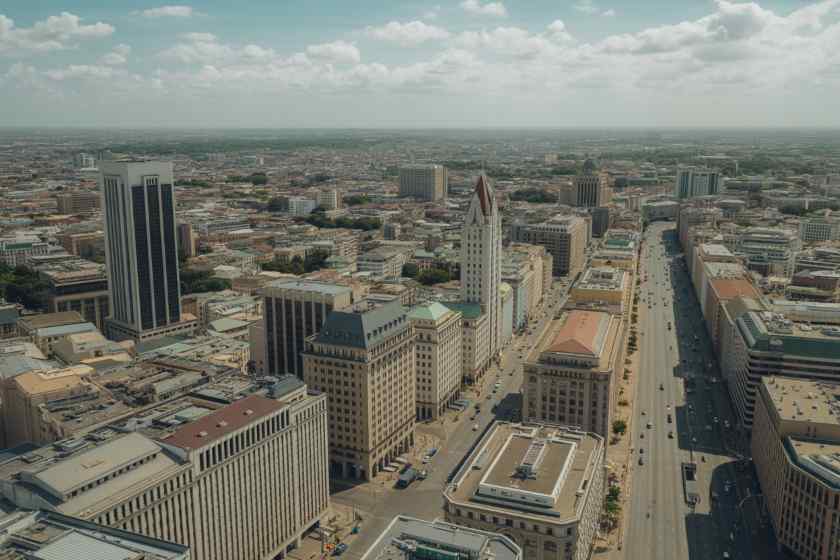Abu Dhabi’s non-oil foreign trade jumps 35% on economic diversification – thenationalnews.com

Report on Abu Dhabi’s Non-Oil Economic Growth and Alignment with Sustainable Development Goals
H1 2025 Non-Oil Foreign Trade Performance
In the first half of 2025, Abu Dhabi’s non-oil foreign trade recorded a significant annual increase of 34.7%, reaching a total value of Dh195.4 billion ($53.2 billion). This growth is a direct indicator of the emirate’s successful economic diversification and its contribution to global commerce. The performance reflects progress towards SDG 8 (Decent Work and Economic Growth) by fostering a robust and resilient economy.
The trade figures, according to Abu Dhabi Customs’ statistics, are broken down as follows:
- Exports: Grew by 64% to Dh78.5 billion.
- Imports: Rose by 15% to Dh80 billion.
- Re-exports: Increased by 35% to over Dh36 billion.
Rashed Al Mansoori, Director General of the General Administration of Abu Dhabi Customs, attributed this success to the adoption of advanced systems, digital technologies, and effective collaboration with strategic partners, which aligns with SDG 9 (Industry, Innovation, and Infrastructure) by modernizing trade infrastructure.
Economic Diversification and Contribution to SDG 8
Abu Dhabi’s broader economic performance underscores its commitment to sustainable development. In 2024, the emirate’s economy expanded by 3.8% annually, reaching a value of Dh1.2 trillion. The non-oil sector was a primary driver of this growth.
- The non-oil sector grew by 6.2% in 2024, reaching Dh644.3 billion.
- This sector’s contribution to the total GDP rose to a record 54.7%.
These figures demonstrate a successful shift away from oil dependency, creating a diversified and sustainable economic model that supports the objectives of SDG 8 by promoting sustained, inclusive, and sustainable economic growth.
Strategic Investments in Industry and Innovation (SDG 9)
Abu Dhabi has implemented long-term strategies to bolster key sectors, directly supporting SDG 9 by promoting inclusive and sustainable industrialization and fostering innovation.
- Industrial Strategy: Launched in 2022 with a Dh10 billion investment, this strategy aims to more than double the manufacturing sector’s contribution to the economy to Dh172 billion by 2031.
- Tourism Sector Development: The emirate plans to increase the tourism sector’s contribution to its GDP from 5% in 2023 to 12% by 2030, creating sustainable jobs and economic value.
- Technology and Aviation: Significant investments are being channeled into future-focused sectors, including aviation, technology, and artificial intelligence, to build a knowledge-based economy.
Ahmed Jasim Al Zaabi, Chairman of the Abu Dhabi Department of Economic Development, confirmed that efforts are focused on streamlining trade procedures and deploying smart systems to enhance efficiency and solidify Abu Dhabi’s position as a global trade and investment hub.
Fostering Global Trade Partnerships (SDG 17)
The UAE’s proactive approach to international trade through Comprehensive Economic Partnership Agreements (Cepas) is a clear commitment to SDG 17 (Partnerships for the Goals). These agreements enhance global trade, strengthen economic ties, and support mutual growth with partner nations.
- Total Agreements Signed: 28 Cepas have been signed with nations around the globe.
- Implemented Agreements: 10 agreements are currently operational with the following partners:
- India
- Indonesia
- Israel
- Turkey
- Cambodia
- Georgia
- Costa Rica
- Mauritius
- Serbia
- Jordan
- Pending Implementation/Negotiation: Agreements with partners such as Australia, South Korea, Malaysia, Kenya, and others are in various stages of implementation or conclusion.
This expansive network of partnerships is crucial for integrating Abu Dhabi into international supply chains and advancing a global agenda for sustainable development.
Analysis of Sustainable Development Goals (SDGs) in the Article
1. Which SDGs are addressed or connected to the issues highlighted in the article?
The article on Abu Dhabi’s economic expansion and trade growth connects to several Sustainable Development Goals (SDGs). The primary focus on economic diversification, industrial growth, and international trade partnerships directly aligns with the following SDGs:
- SDG 8: Decent Work and Economic Growth – The article’s central theme is the robust economic growth of Abu Dhabi, specifically focusing on the expansion of its non-oil sector. This aligns with the goal of promoting sustained, inclusive, and sustainable economic growth.
- SDG 9: Industry, Innovation and Infrastructure – The article highlights Abu Dhabi’s industrial strategy, investments in manufacturing, and the adoption of advanced digital technologies to facilitate trade. These efforts are central to building resilient infrastructure, promoting inclusive and sustainable industrialization, and fostering innovation.
- SDG 17: Partnerships for the Goals – The extensive discussion on the UAE signing numerous Comprehensive Economic Partnership Agreements (Cepas) with various countries to boost global trade directly relates to strengthening the means of implementation and revitalizing the global partnership for sustainable development.
2. What specific targets under those SDGs can be identified based on the article’s content?
Based on the information provided, several specific targets under the identified SDGs can be pinpointed:
-
SDG 8: Decent Work and Economic Growth
- Target 8.1: Sustain per capita economic growth in accordance with national circumstances. The article explicitly mentions that “Abu Dhabi’s economy expanded by 3.8 per cent annually in 2024 to reach an all-time high value of Dh1.2 trillion,” which directly reflects this target.
- Target 8.2: Achieve higher levels of economic productivity through diversification, technological upgrading and innovation. The article emphasizes Abu Dhabi’s “diversification efforts,” the growth of its “non-oil sector,” and plans to develop sectors like “aviation and technology, with new investments in artificial intelligence.”
-
SDG 9: Industry, Innovation and Infrastructure
- Target 9.2: Promote inclusive and sustainable industrialization and, by 2030, significantly raise industry’s share of employment and gross domestic product. This is supported by the mention of an “industrial strategy to improve the contribution of the sector to the economy, by investing Dh10 billion… to more than double the emirate’s manufacturing to Dh172 billion by 2031.”
- Target 9.b: Support domestic technology development, research and innovation. The article notes that growth is “driven by the adoption of advanced systems, innovations, and digital technologies” and that the emirate is “deploying smart systems, and integrating services to enhance flow and accelerate efficiency.”
-
SDG 17: Partnerships for the Goals
- Target 17.10: Promote a universal, rules-based, open, non-discriminatory and equitable multilateral trading system. The article details that “The UAE is signing new trade agreements… It has already signed 28 Comprehensive Economic Partnership Agreements (Cepas)” with numerous global partners.
- Target 17.11: Significantly increase the exports of developing countries. The article reports a significant increase in trade figures, stating that “Exports during the period grew by 64 per cent to Dh78.5 billion,” which aligns with the principle of expanding global trade.
3. Are there any indicators mentioned or implied in the article that can be used to measure progress towards the identified targets?
Yes, the article provides several quantitative and qualitative indicators that can be used to measure progress:
-
Indicators for SDG 8
- Indicator 8.1.1 (Annual growth rate of real GDP per capita): The article provides the annual GDP growth rate: “Abu Dhabi’s economy expanded by 3.8 per cent annually in 2024.”
- Indicator for Target 8.2: The contribution of the non-oil sector to the total GDP. The article states the “non-oil sector… [had its] highest annual contribution yet to the total gross domestic product at 54.7 per cent.”
-
Indicators for SDG 9
- Indicator 9.2.1 (Manufacturing value added as a proportion of GDP): The article provides a clear financial target for the manufacturing sector: “to more than double the emirate’s manufacturing to Dh172 billion by 2031.” This figure serves as a direct measure of progress.
- Indicator for Target 9.b: The adoption of advanced technologies. The article implies progress by mentioning the use of “advanced systems, innovations, and digital technologies” and “smart systems” to facilitate trade.
-
Indicators for SDG 17
- Indicator for Target 17.10: The number of trade agreements signed and implemented. The article specifies that the UAE “has already signed 28 Comprehensive Economic Partnership Agreements (Cepas)” and that “Ten of these deals… have been implemented and are operational.”
- Indicator for Target 17.11: Growth in trade volumes. The article provides specific data: “Abu Dhabi’s non-oil foreign trade… jumped 34.7 per cent annually to Dh195.4 billion,” with exports growing “by 64 per cent to Dh78.5 billion.”
4. Summary Table of SDGs, Targets, and Indicators
| SDGs | Targets | Indicators Identified in the Article |
|---|---|---|
| SDG 8: Decent Work and Economic Growth | 8.1: Sustain per capita economic growth. 8.2: Achieve higher levels of economic productivity through diversification and innovation. |
|
| SDG 9: Industry, Innovation and Infrastructure | 9.2: Promote inclusive and sustainable industrialization. 9.b: Support domestic technology development and innovation. |
|
| SDG 17: Partnerships for the Goals | 17.10: Promote a universal, rules-based, open, non-discriminatory and equitable multilateral trading system. 17.11: Significantly increase the exports of developing countries. |
|
Source: thenationalnews.com

What is Your Reaction?
 Like
0
Like
0
 Dislike
0
Dislike
0
 Love
0
Love
0
 Funny
0
Funny
0
 Angry
0
Angry
0
 Sad
0
Sad
0
 Wow
0
Wow
0



























;Resize=805#)



















































